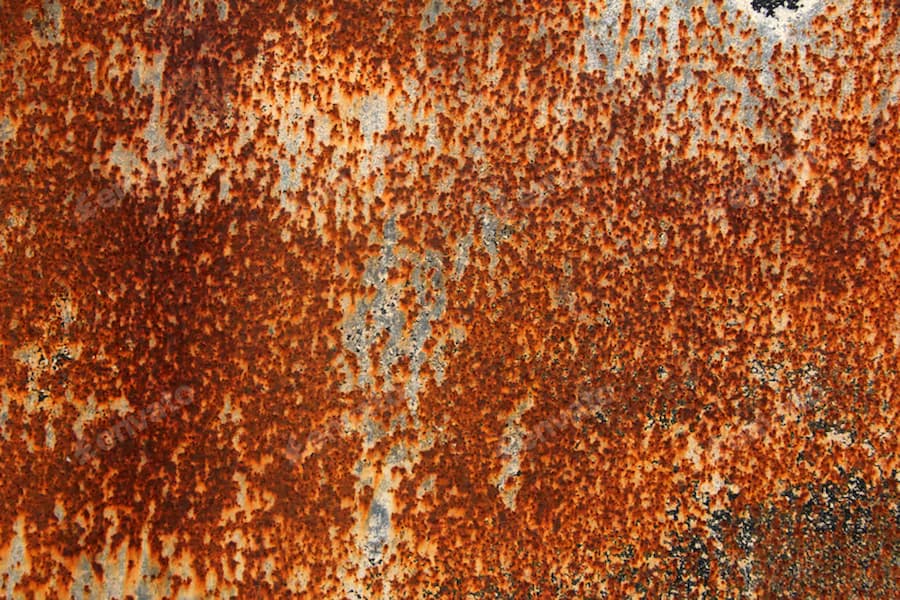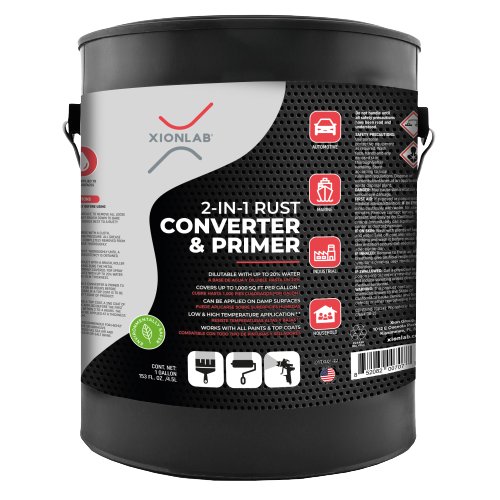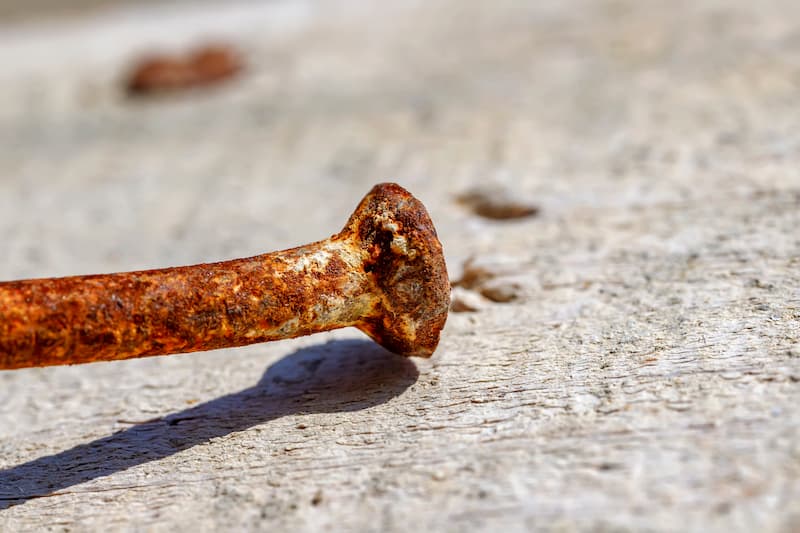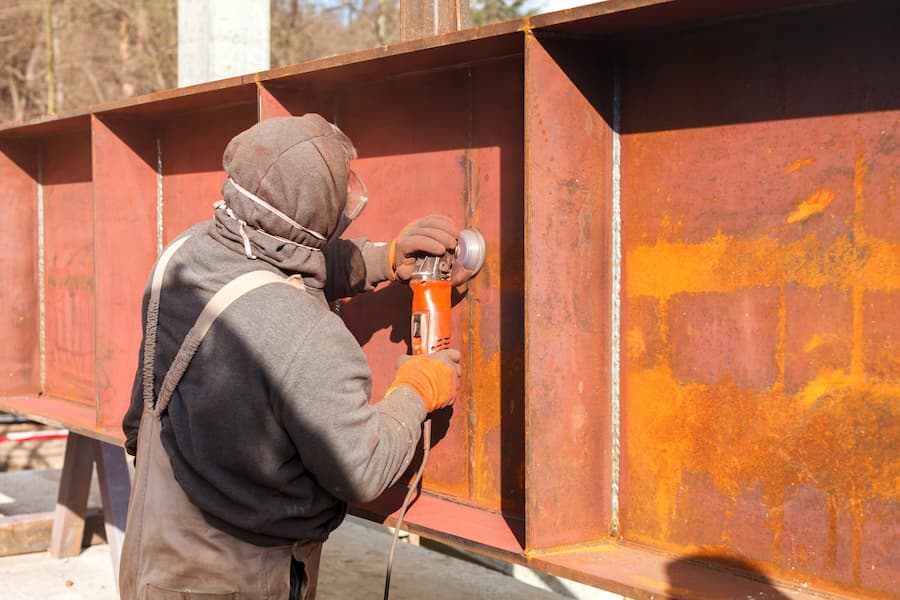Rust Conversion for Home Improvement
Dealing with rust is a common challenge for homeowners, especially when metal structures or tools are exposed to moisture or harsh weather conditions. Rust conversion is a proven method to prevent further damage and restore the appearance and functionality of metal surfaces. From rust converters to rust removers and primers, a variety of solutions are available to stop rust in its tracks and prevent future corrosion. Rust conversion is not only practical but can also be part of a long-term maintenance plan for your home. Whether you’re working on your garden tools, outdoor railings, or metal furniture, understanding how to properly use rust converters is essential to protect your home and its value.

What is Rust and How Does it Affect Home Improvement Projects?
The Science of Rust Formation
Rust is the result of a natural chemical reaction between iron or steel and moisture in the air, combined with oxygen. This process, known as oxidation, causes the metal to deteriorate and form iron oxide. Over time, this weakens the metal, making it brittle and susceptible to further corrosion. Rust is particularly problematic for home improvement projects because it compromises the structural integrity of metal objects and surfaces.
The presence of rust can turn otherwise solid materials into crumbling, unstable surfaces. For homeowners, the problem often appears on outdoor fixtures like railings, fences, and garden tools. Once rust takes hold, it spreads, especially in environments with high humidity, rainfall, or near coastal areas where salt in the air accelerates the process.
Why Rust Conversion is Essential for Home Improvement
Taking steps to address rust is critical for maintaining the longevity of metal fixtures and tools around your home. Rust conversion is a highly effective method of stopping rust from worsening by turning it into a stable, inert material. This method doesn’t remove rust entirely but chemically alters it, allowing the surface to be paintable and protected from further damage.
Using rust converters is essential for homeowners who want to protect their investments in metal furniture, fixtures, and tools. Without rust conversion, rust spreads and destroys surfaces, leading to costly repairs or replacements. By incorporating rust converters into your home maintenance routine, you prevent further corrosion and maintain the integrity of metal surfaces for years to come.
How Does a Rust Converter Work?
What is a Rust Converter?
A rust converter is a chemical product that transforms rust into a stable compound that can be coated with paint or primer. It works by reacting with the iron oxide in the rust, changing it into a black, inert material that no longer corrodes. This creates a solid foundation for coating or painting.

Many rust converters on the market today, such as Xionlab rust converter, making them easy to apply with minimal preparation. The chemical process also ensures that the rusted surface is left smooth and ready for additional treatments like primers or paint. Using a rust converter not only stops rust from progressing but also prepares the surface for future use.
Rust Converters vs. Rust Removers
While rust converters are designed to stabilize rust and create a paintable surface, rust removers take a different approach. Rust removers, such as rust stain remover sprays, physically dissolve the rust, restoring the metal to its original state. This method is ideal for projects where rust needs to be completely eliminated, especially on bare metal or rusty garden tools.
Both methods have their place in home improvement. For projects involving heavy rust on metal surfaces, using a rust converter is often the better choice. This is especially true when the rust has compromised the surface, and removing it would cause further damage. Rust removers, on the other hand, are best for smaller areas where surface rust is just beginning to form.
Choosing the Right Rust Converter for Home Improvement
The Best Rust Converters on the Market
There are numerous rust converters available, each suited to specific tasks. For example, Xionlab is highly recommended for converting rust on outdoor surfaces, such as fences and railings. Its water-based formula makes it easy to apply with a brush and is safe for both small and large projects. Xionlab Rust Converter is another top choice, providing industrial-grade rust conversion for areas where tough rust has taken hold.
In 2024, rust converters have become more advanced, offering better coverage with minimal effort. Many products, such as 1 gal versions, cover up to 500 square feet, making them ideal for larger home improvement projects. Whether you’re restoring outdoor furniture or working on metal surfaces in your garage, finding the best rust converter can make all the difference in achieving a professional finish.
What to Look for in a Rust Converter
When choosing a rust converter, consider factors such as ease of application, drying time, and whether the product is water-based or oil-based. Water-based rust converters are easy to clean up and tend to dry faster, while oil-based converters provide more durable protection in environments with high moisture or extreme weather conditions.
Coverage is another essential factor. A 1 gallon container can typically cover several hundred square feet, which is ideal for larger projects. For smaller tasks, a rust remover spray may be more convenient, especially for tight spots or hard-to-reach areas.
How to Apply a Rust Converter for Best Results

Step 1: Surface Preparation
Before applying a rust converter, it’s crucial to prepare the surface properly. Start by removing any loose or flaking rust with a wire brush or sandpaper. The cleaner the surface, the better the rust converter will bond and form a protective layer. If you’re dealing with a particularly rough surface, you may need to use a more aggressive method, such as sandblasting.
Thorough surface preparation ensures that the rust converter can chemically react with the remaining rust to create a stable, paintable surface. Skipping this step can lead to poor results and require reapplication down the road.
Step 2: Applying the Rust Converter
Once the surface is prepared, you can apply the rust converter. Most rust converters can be painted with a brush or applied as a spray, depending on the product. The application should be even, ensuring that all areas are covered. For best results, follow the manufacturer’s instructions regarding the number of coats and drying times.
For larger areas, such as fences or railings, using a sprayer may save time and ensure even coverage. Smaller areas, like garden tools or automotive parts, are better suited for brush application. After applying the rust converter, allow it to fully dry before proceeding to the next step.
Step 3: Letting the Rust Converter Dry
Drying times for rust converters can vary, but most water-based products dry within a few hours. Oil-based converters, however, may take longer, especially in humid or cold environments. Once the rust converter is dry, the surface will turn a dark, black color, indicating that the rust has been chemically converted into a stable, inert compound.
It’s essential to allow the rust converter to dry fully before applying any additional treatments, such as primers or paint. Rushing this process can lead to an uneven finish or leave the surface vulnerable to further corrosion.
Rust Converter Primers: Sealing the Surface for Long-Lasting Protection
Why Use a Rust Converter Primer?
After the rust converter has dried, applying a rust converter primer is the next step in sealing the surface and ensuring long-lasting protection. Primers act as a protective barrier, preventing future rust from forming and creating a smooth surface for painting or other finishes.
Using a primer is particularly important for outdoor projects where the metal will be exposed to moisture or harsh weather. By sealing the surface with a primer, you extend the life of your metal surfaces and avoid the need for constant maintenance.
How to Apply a Rust Converter Primer
Applying a rust converter primer is similar to applying the converter itself. It can be brushed or sprayed onto the surface once the converter has dried. For best results, apply at least two coats of primer, allowing each coat to dry before applying the next.
Primers are available in both oil-based and water-based varieties, so choose one that is compatible with your rust converter and the environment where the metal will be used. For areas prone to heavy rust, an oil-based primer may provide better long-term protection.
Best Practices for Home Improvement with Rust Conversion
Common Rust Conversion Mistakes to Avoid

One of the most common mistakes when using a rust converter is failing to properly prepare the surface. Skipping the surface preparation step can result in poor adhesion, reducing the effectiveness of the product. Another common mistake is not applying a primer after the rust converter has dried. Without a primer, the surface remains vulnerable to future corrosion.
Tips for Maintaining Rust-Free Surfaces
Once you’ve successfully converted the rust and applied a primer, it’s important to maintain the surface. Regularly check for signs of rust, especially in outdoor areas, and touch up any spots with a rust preventative coating. By maintaining your metal surfaces, you can prevent rust from returning and prolong the life of your home improvement projects.
Frequently Asked Questions About Rust Conversion for Home Improvement
Rust conversion is an essential part of home improvement for anyone dealing with metal surfaces exposed to the elements. By using the right anti-rust products and ensuring rust rust away effectively, you can protect your surfaces and extend their lifespan. With rust converters, you can treat metal surfaces without significant deterioration, whether for calcium and lime deposits or in garden outdoor living areas.
Many rust converters provide flexible options, and you also have the option to choose products suited to your needs, available with selected delivery locations. Incorporating rust conversion into your maintenance routine will not only preserve metal surfaces like those in windows electrical flooring, ceiling fans doors, and composites cleaning decor, but it will also save you time and money.




